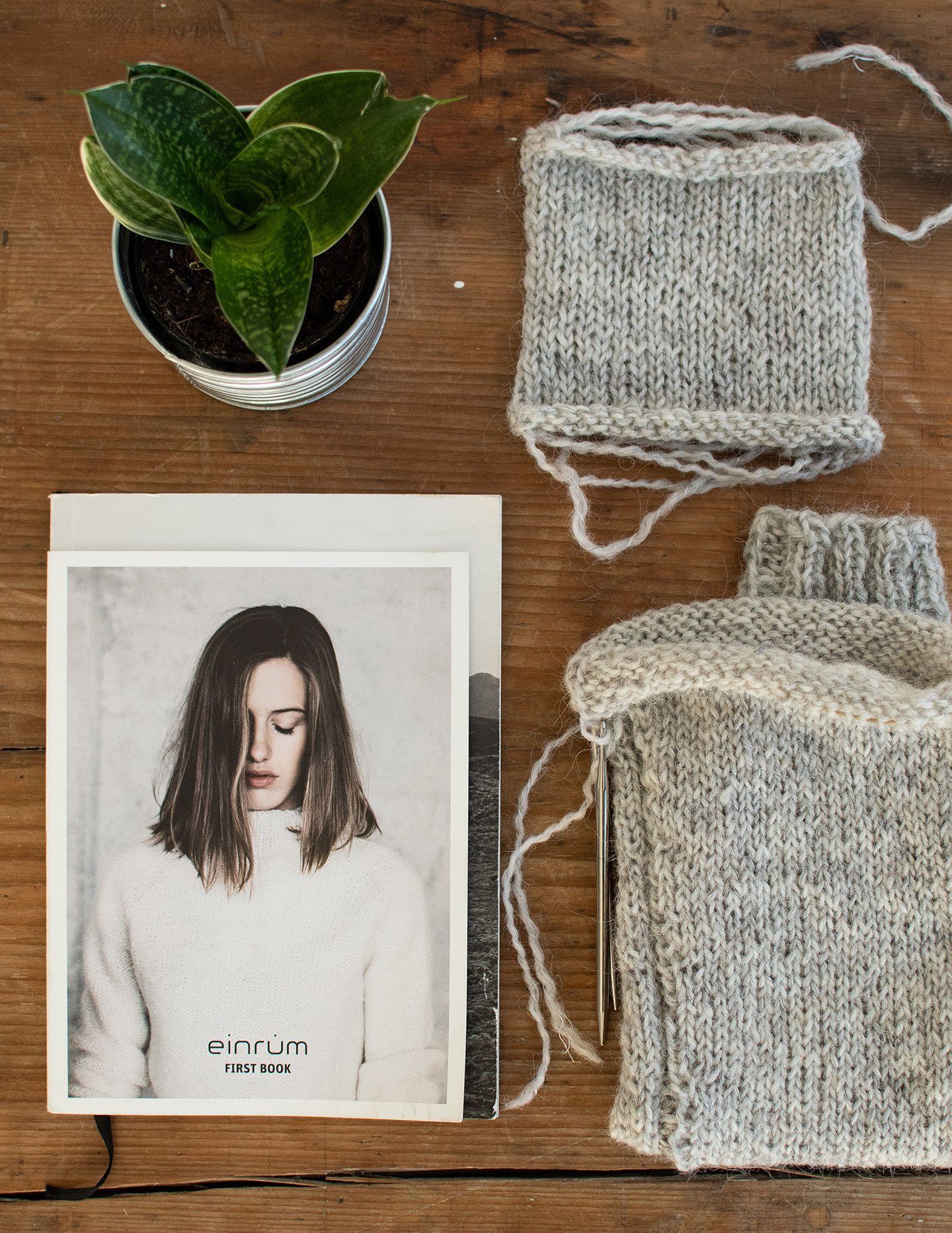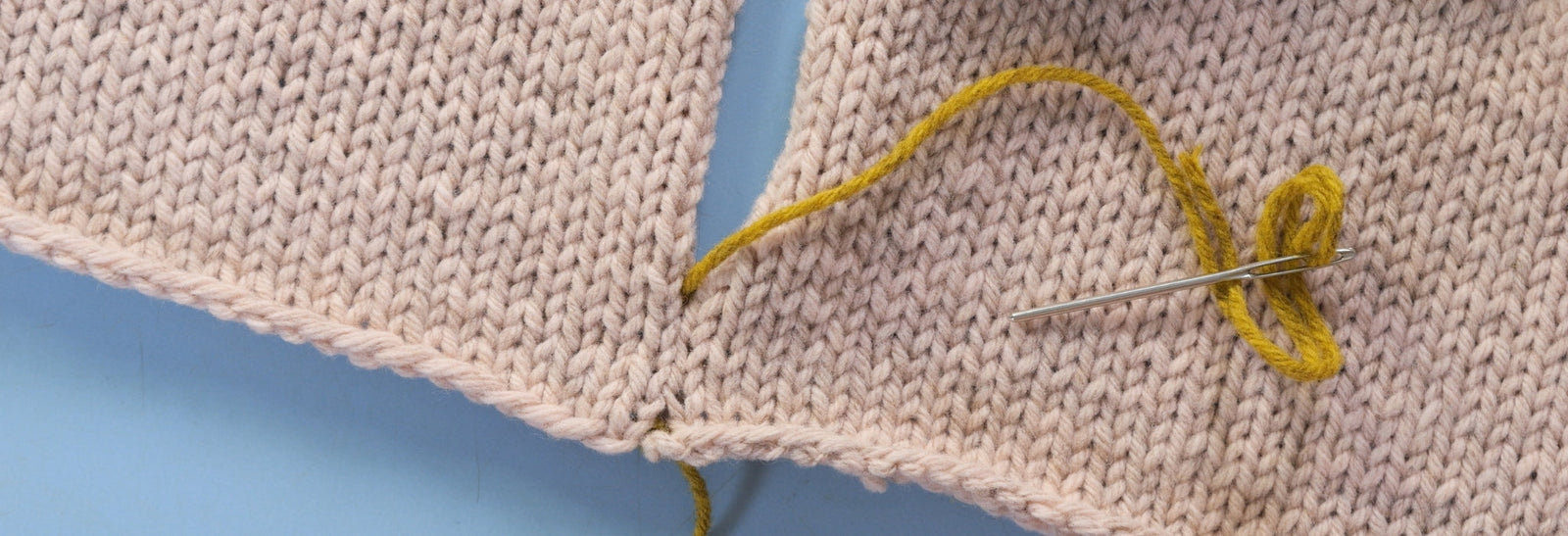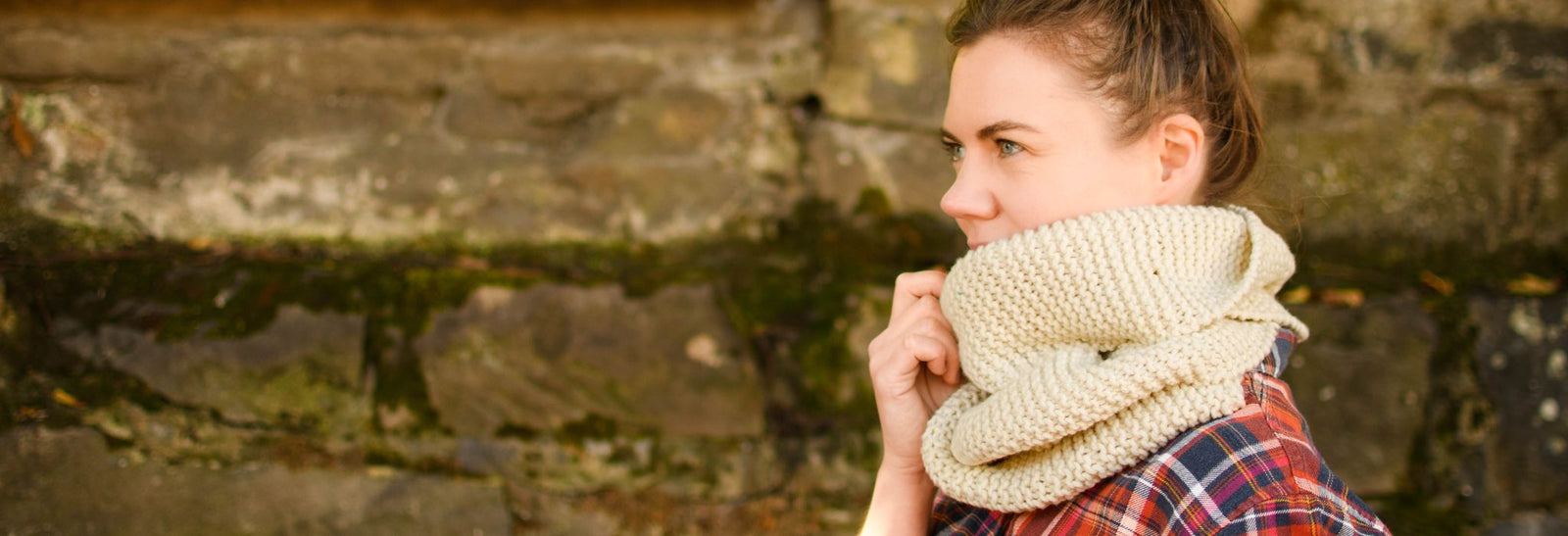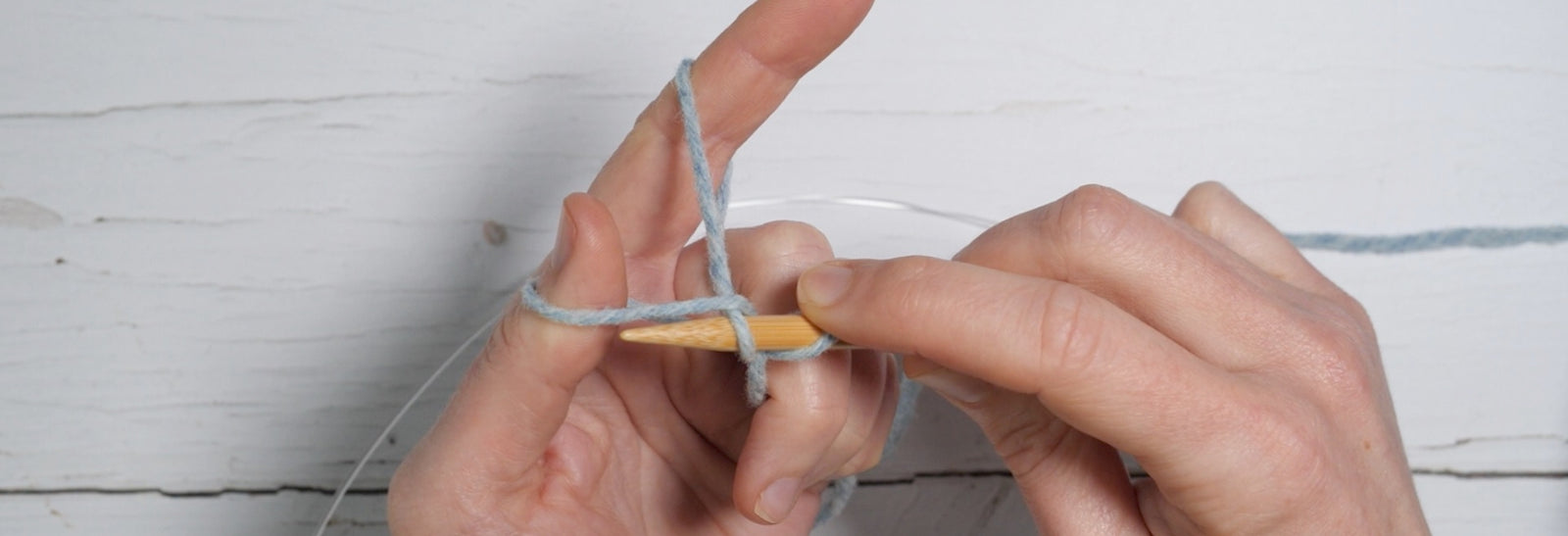Your Cart is Empty

How does ease affect inclusive size ranges?
May 21, 2019
Following on from our post about choosing what size to knit, we wanted to elaborate on what ease means and how it interacts with sweater sizes, especially when it comes to designs with an oversized look.
What is Ease?
The difference between your body measurements and the finished measurements of the sweater is called ease. The amount of ease required will depend on the elasticity (or lack thereof) of the fabric, the thickness of the fabric, how many layers you plan to wear under the garment, personal preference and prevailing fashion trends. Some patterns will tell you what size the model is wearing and their chest measurement while others will give a suggested amount of ease to help you choose your size.

Negative, positive and zero ease
- Negative ease is when the garment, measured flat, is smaller than the wearer but fits in a way they like.
- Positive ease is when the garment, measured flat, is larger than the wearer but fits in a way they like.
- minimal ease: 0-2”
- moderate ease: 3-5”
- significant ease: more than 5”
- Zero ease is when both the garment and the wearer's body have the same measurement.
- Different areas of a garment may have different amounts of ease - the body of a garment may have much more ease than the sleeves.

Wearing vs style ease
Wearing ease is the amount of ease you need to be able to move comfortably in the garment. Because knitted fabric is generally stretchy, a garment can have zero or negative ease and still be comfortable to wear for a fitted look. Some garment styles require more wearing ease than others.
Style ease is any additional ease added to create a particular look or silhouette, and can be used in conjunction with wearing ease. Different sections of a garment can have varying amounts of style ease for design effect - consider an oversized body with fitted sleeves, or a more form-fitting body with dramatic voluminous sleeves.
What does ease have to do with inclusive sizing?
The problem: just because finished measurements are getting larger, that doesn’t necessarily mean they’re getting more inclusive.
Design Intention
It's becoming much more common for patterns to include information about how much ease the sample was photographed with and sometimes the size the model is wearing. This is a great step towards transparency in sizing, but it doesn’t address the sizes themselves.
A sweater that calls for 8” of ease but tops out at a finished measurement of 50” is telling knitters that it’s intended to fit a 42” bust. That just isn’t enough! People who wear larger sizes want to be able to choose whether their garments are draped and oversized, rather than being forced into knitting sizes with less ease than intended.
Can’t I just change the amount of ease?
Sure, there’s quite a bit of flexibility in choosing a size based on your style preferences!
But when it comes to re-creating a sweater based on a pattern and the promise of a particular look, a finished chest measurement of 50” written to fit a 42” won’t have the same silhouette on a person with a 50” body. Depending on the style, the shoulders, sleeves, and lengths will be sized for a 42”, leading to shoulders that aren’t wide enough, hiking the too-small sleeve further up the arm, and generally feeling like this wasn’t sized for you. In a garment meant to be worn with significant ease, suggesting that a knitter simply choose a size closest to their actual size regardless of ease will result in a different look.
Certain garment styles, such as drop shoulders, need at least 4-6” of ease in the body circumference in order to allow comfortable movement. If the chest is too tight, there won’t be enough extra fabric at the underarm to create a “hinge” for the arm to move up and down. Other garment styles, such as set-in sleeves, work better when fitted more closely to the contours of the body. Of course, there are way more styles than these two, and each has their own fit considerations.
The total number of sizes and the increments between sizes are also important to note. If the sizes are only 2-3” apart and there are lots of them, making one size up or down from your usual will fit a bit differently, but will be pretty close. But there are lots of reasons why a garment may have larger gaps between sizes, such as large design elements (a large stitch repeat or feature), or an unusual construction.
What Does Changing Ease Look Like?

This pullover raglan pattern is KBG 11 from Einrum First Book. Bex knit this sample in the largest size and we had fun trying it on different people — the results were sometimes surprising, but definitely proved that there are limits to how much changing the ease can make a sweater fit a wider range of sizes. We liked it best with either a significant amount of positive ease, so that it looked intentionally oversized, or with almost none.
We ultimately decided not to carry this print book alongside the yarn. Although the minimalist gender neutral designs are lovely, we felt like the size range was too limited. If it works for you it’s available to order direct from the yarn company. For a similar basic seamless raglan pullover, you can try this pattern generator No pattern generator is perfect, but this would give you a good starting point based on your actual measurements and gauge.

Bex also made the Great Love Cardigan by Anke Stricke in the size 54, in Einrum, and we photographed it on several people. We found the amount of positive ease (10-14”) was quite flexible, but as written it definitely looked better on the taller members of our team. It’s a great example of where you’d want to watch how shoulder width affects sleeve length. This is worked top-down so it would be easy to try on and knit to the length you want.
When considering ease in choosing a size to knit, it is worth looking at the information provided about arm sizing and length, not just ease at the torso. This will help avoid any surprises in your finished object. Don't hesitate to adjust lengths to suit how you want to wear the finished garment.
Of course, when assessing whether a size range actually includes your size you'll want to look at whether the finished measurements will give you the amount of style ease that either the design is intended to have or that you prefer. We hope that publishers and designers will take ease into account more when they make decisions on what sizes to include in a pattern.
Also in Journal

Learn to Knit: Mattress Stitch
March 29, 2023
By following our step-by-step mattress stitch knitting tutorial, you'll learn how to make your seams look beautiful and how best to prepare your knitting so that when you seam it with mattress stitch, it goes smoothly on the first try.
Read More
How to Knit a Scarf: A Beginners Guide to Scarf Knitting
March 23, 2023
Want a quick and easy beginners tutorial on how to knit a scarf? This garter stitch scarf is easy to knit and requires just 3 skills; casting on, the knit stitch and casting off.
Read More
Learn to knit: the long tail cast-on
February 03, 2022
The long tail cast on is a great multi-purpose knitting cast on and the perfect place for beginner knitters to start. Learn how to work the long tail cast on and how to estimate the length of yarn needed with our clear step by step tutorial and video.
Read More Recent Articles
- Learn to Knit: Mattress Stitch March 29, 2023
- How to Knit a Scarf: A Beginners Guide to Scarf Knitting March 23, 2023
- Learn to knit: the long tail cast-on February 03, 2022
- How to Kitchener Stitch December 09, 2021
- Crochet Provisional Cast-on December 02, 2021
- Learn to knit: How to knit in the round with double pointed needles November 25, 2021
- Learn to knit: How to knit in the round using the magic loop technique November 25, 2021
- Learn to knit: How to knit in the round November 25, 2021
- Knitted Gift Ideas for you and your loved ones November 18, 2021
- Celebrating our Porty Hat Preview Knitters October 28, 2021
Free resources
-
KALS, step-by-step pattern guides and free patterns
Learn brioche with the free Daniel's Hat pattern
Tombreck - a free chevron beanie pattern
Working the brioche neck detail on the Polwarth sweater
Basics
Casting on
Decorative Channel Island Cast-on
Binding off
3 Easy Stretchy Bind-offs (p2tog bind-off; k2togtbl, k1 bind-off; Jeny's surprisingly stretchy bind-off)
Tubular Bind-off for brioche stitch
Increasing
Paired increase methods compared
Decreasing
Brioche stitch double decreases
Knitting in the round
How to Knit in the round using Magic Loop
How to Knit in the round using DPNs
Short rows
Swatching and gauge
Tips and tricks
Avoiding ears when binding off
Tighter purl stitches for neater cables and ribbing
Cabling without a cable needle
Reading knitting patterns
Understanding "continue in pattern"
Finishing
Garment knitting
Joining the body and sleeves on a seamless bottom up sweater
Sizing
Inclusive garment knitting
How to pick a garment without a model for you (specifically addresses finding garment patterns when your gender identity isn't represented and the styles you want to knit might not be sized to fit your body)
How does ease affect inclusive size ranges?
Specific stitch patterns
Lace
Identifying and fixing mistakes in lace knitting
Colourwork
Getting started with stranded colourwork
Understanding colour dominance
Working stranded colourwork over small circumferences
Decreases in stranded colourwork
Holding the yarn for stranded colourwork
Ladderback Jacquard (a neat way to deal with long floats)
Cables
Cabling without a cable needle
Cabling without a cable needle on the wrong side
How to knit cabled decreases
Closed ring cable increases and decreasesBrioche
How to work brioche stitch in the round
Other crafts
Cross stitch
How to begin your first large cross stitch project
How to finish a cross stitch project with an embroidery hoop frame
Mending

Sign up today
Find out the latest news from the studio such as sales, pattern releases, and new workshops or KALs our learning community, The Knitwork. We also share helpful tips and exclusive subscriber discounts...

